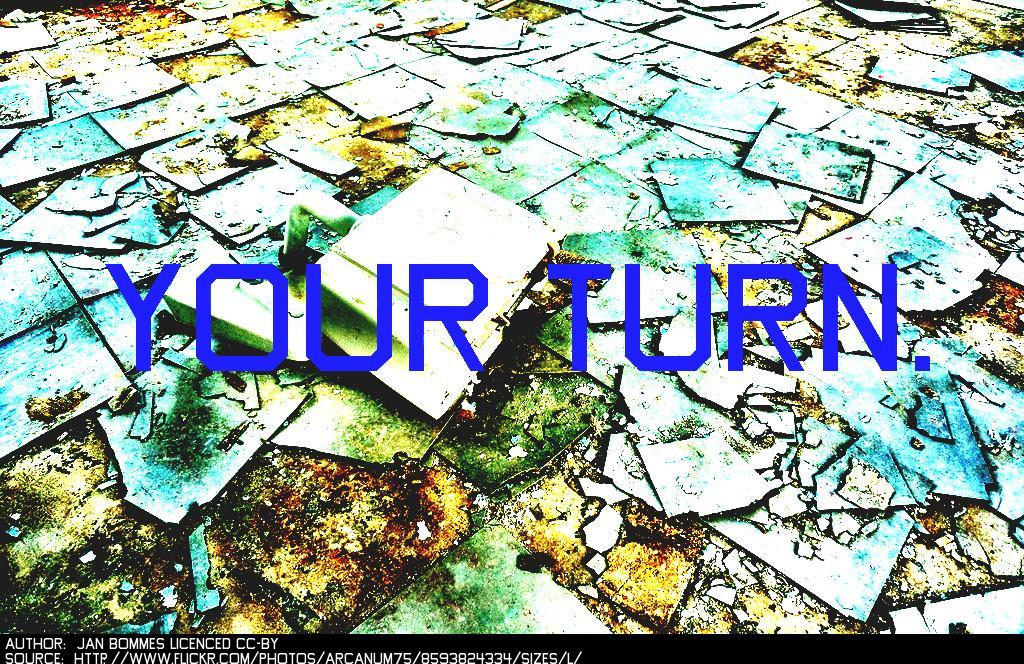I’m trying to participate in another MOOC (massive, open, online course), though being away on holiday for a couple of weeks is making it difficult. It’s the “Open Education” course from the Oen University.
This is the sort of MOOC where it makes sense to say I’m “behind,” because there is a clear weekly schedule with weekly assignments to complete. I’m about a week behind. This structure is not appealing to me at the moment, after ETMOOC, which was much more open to participants doing whatever they felt most meaningful in response to the presentations, Twitter chats, shared links, and more. But I’m giving it a go because I really want to learn more about open education. I’ll probably do a few of the assigned activities, and then for the rest just write blog posts about what strikes me as most interesting.
Here’s one of the activities for the first week. We were asked to read Martin Weller’s article entitled “The Openness-Creativity Cycle in Education” and Terry Anderson’s slides from a Keynote for Alt-C in 2009. (Alt-C is the conference for the Association for Learning Technology). The activity was to then create a visual representation of open education, based on what we had read. “The key is to provide a representation that draws together the key concepts of openness as you perceive them,” according to the activity instructions.
I didn’t actually do that. Instead, I focused on one aspect of open education, or rather, one aspect of “openness”: that it’s more than just being available for reading/viewing for free, but is also available for remixing, reworking, taking pieces and doing something entirely different with them.
Part of the reason I did this was because I wanted to take on the challenge of creating a visual representation that didn’t just replicate a textual one. And if I tried to pull together all the strands of open education from the two readings (and elsewhere), I’d just end up putting into visual form the same things I would have otherwise written in text. That’s pretty much all I do in my work: write and speak narrative text. And I wanted to try to get beyond that a bit by using a picture that speaks. As you’ll see with the image, though, I couldn’t get away from text entirely.
This is not my thing, usually, so I won’t be surprised if it doesn’t entirely work, and if what seems good today seems simplistic tomorrow.
Since I seem incapable of doing without textual explanations, I will just say this. Multiple pieces made by others can appear as useless scatter, or as raw materials.

Downloaded from http://ruschagram.com/show/44847e9u627uhfs
P.S. The other reason I did this is because one of my Twitter peeps created Ruschagram and this was a great excuse for me to play around with it.

Hi Christina,
I respect the fact that you are both taking your time and taking what you want from this course. I also think that it is important to act/reuse/remix and finding the right tools is key. Thanks for sharing Ruschagram!
Hi Annie: I just finished another MOOC, called ETMOOC (Educational Technology and Media MOOC: http://etmooc.org), and that one was much more open in structure. Meaning, there were no particular assigned activities; we were just asked to blog on whatever struck us as most interesting/meaningful in the weekly presentations, Twitter chats, shared resources, what have you. It was really a great way to learn, when one doesn’t have the time to keep up with everything. I decided to take advantage of the fact that I’m not taking the Open Ed course for any credit to just do what I have time for/what is most interesting. Still, with such a structured course I have a hard time giving up on the “guilt” factor of feeling like I should be doing more. I’m working on that. Give Ruschagram a try…it’s fun!
Hi Christina
I think your image says a lot and if you had left it without any text I think you might be surprised by all the other interpretations that might be made.
Your point made in words about scattered materials is very interesting. There is a theory that small OER can encourage re-use and are more adaptable for re-purposing by other educators than packaged materials, in contrast to the fact that some students request more context and packaging.
I like this alternative view you offer – it highlights the fact that people may need quite a lot of skills to take the raw materials and re-package them or provide other meaning in different contexts.
Now I have to go and investigate Rushagram as I am a flickr fan…
Thanks
And I think I may be the most behind in this course: (
Hi Lou:
I bet you’re right that if I had just left the image with no explanation it would be open to more interpretations, and thus perhaps more powerful. In fact, after I posted this I thought: well, I went and just did a picture of what I wrote in text anyway, even though I wanted the image to speak more for itself. It’s like I can’t help it; I’ve been a text person most of my life, and it’s a hard habit to break.
And yes, I agree that it would take quite a bit of skill to re-purpose, re-use what others have created. That’s a challenge I’m interested in taking on, but it’s going to be time-consuming, I expect. And it may not happen right away.
Well, if you’re behind you at least had the excuse of several days without power! And probably other things going on too… Thanks for the comment!